Spirulina platensis Consumption Prevents Obesity and Improves the Deleterious Effects on Intestinal Reactivity in Rats Fed a Hypercaloric Diet
- PMID: 34367461
- PMCID: PMC8337120
- DOI: 10.1155/2021/3260789
Spirulina platensis Consumption Prevents Obesity and Improves the Deleterious Effects on Intestinal Reactivity in Rats Fed a Hypercaloric Diet
Abstract
The consumption of hypercaloric diets is related to the development of obesity, favoring the etiology of gastrointestinal disorders. In this context, Spirulina platensis (SP), some blue-green algae with antioxidant action, appears as a potential therapeutic alternative to prevent obesity and associated intestinal disorders. Thus, the present study is aimed at evaluating the deleterious effects of the hypercaloric diet on the contractile and relaxing reactivity of the ileum of rats, as well as the possible preventive mechanisms of dietary supplementation with SP. Wistar rats were divided into three groups: fed a standard diet (SD), a hypercaloric diet (HCD), and/or supplemented with 25 mg/kg SP (HCD + SP25) for 8 weeks. The hypercaloric diet was effective in promoting obesity in rats, as well as decreasing potency and ileal relaxing and contractile efficacy. In contrast, dietary supplementation with SP was able to prevent some of the parameters of experimental obesity. In addition, SP prevented the reduction of intestinal reactivity, possibly due to a positive modulation of voltage-gated calcium channels (CaV) and negative regulation of muscarinic receptors (M3). Thus, food supplementation with Spirulina platensis becomes a promising alternative in the prevention of gastrointestinal diseases induced and/or aggravated by obesity.
Copyright © 2021 Anderson Fellyp Avelino Diniz et al.
Conflict of interest statement
The authors declare no conflict of interest.
Figures
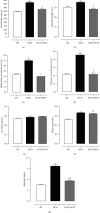
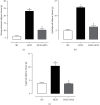
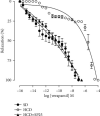
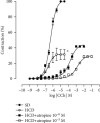
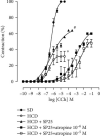

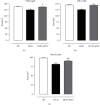

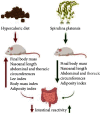
Similar articles
-
Potential Therapeutic Role of Dietary Supplementation with Spirulina platensis on the Erectile Function of Obese Rats Fed a Hypercaloric Diet.Oxid Med Cell Longev. 2020 Jun 30;2020:3293065. doi: 10.1155/2020/3293065. eCollection 2020. Oxid Med Cell Longev. 2020. PMID: 32685091 Free PMC article.
-
Supplementation with Spirulina platensis Prevents Damage to Rat Erections in a Model of Erectile Dysfunction Promoted by Hypercaloric Diet-Induced Obesity.Mar Drugs. 2022 Jul 22;20(8):467. doi: 10.3390/md20080467. Mar Drugs. 2022. PMID: 35892935 Free PMC article.
-
Spirulina Platensis Supplementation Coupled to Strength Exercise Improves Redox Balance and Reduces Intestinal Contractile Reactivity in Rat Ileum.Mar Drugs. 2020 Jan 29;18(2):89. doi: 10.3390/md18020089. Mar Drugs. 2020. PMID: 32013202 Free PMC article.
-
Spirulina platensis and silicon-enriched spirulina equally improve glucose tolerance and decrease the enzymatic activity of hepatic NADPH oxidase in obesogenic diet-fed rats.Food Funct. 2018 Dec 13;9(12):6165-6178. doi: 10.1039/c8fo02037j. Food Funct. 2018. PMID: 30431036
-
Supplementation with Spirulina platensis Prevents Uterine Diseases Related to Muscle Reactivity and Oxidative Stress in Rats Undergoing Strength Training.Nutrients. 2021 Oct 24;13(11):3763. doi: 10.3390/nu13113763. Nutrients. 2021. PMID: 34836018 Free PMC article.
References
-
- Brennan V. M., Kumanyika S. K., Zambrana R. E. Baltimore (MD): Johns Hopkins University Press; 2014. Introduction: advancing a new conversation about obesity in the underserved. Obesity interventions in underserved communities: evidence and directions.
-
- WHO. Health topics–obesity and overweight. WHO; 2020.
MeSH terms
Substances
Supplementary concepts
LinkOut - more resources
Full Text Sources
Medical

